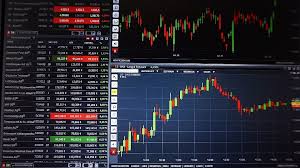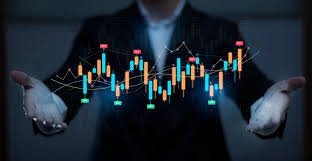
The Essential Guide to Forex Trading Software: Maximizing Your Trading Potential
In the fast-paced environment of forex trading, having the right tools at your disposal can significantly impact your success. forex trading software https://exbroker-argentina.com/ encompasses platforms and tools designed to help traders execute, analyze, and manage their trades more efficiently. Understanding the functionalities and types of forex trading software available can empower traders at all levels to optimize their trading strategies and maximize potential profits.
What is Forex Trading Software?
Forex trading software refers to the various digital applications and platforms that traders use to analyze the forex market, execute trades, and manage their trading accounts. These programs can range from sophisticated trading platforms that offer a multitude of features to simpler applications designed for specific functions, such as charting or automated trading.
Types of Forex Trading Software
1. Trading Platforms
Trading platforms are the most common type of forex trading software. They provide traders with the tools necessary to enter and exit positions, monitor market prices, and analyze charts. Popular trading platforms include MetaTrader 4 (MT4), MetaTrader 5 (MT5), and cTrader, each offering unique features catering to various trading styles.
2. Charting Software
Charting software allows traders to visualize price movements over different time frames. These tools are essential for technical analysis, enabling traders to identify patterns, trends, and potential entry or exit points. Charting software often integrates with trading platforms, providing seamless access to both analysis and trading functionalities.
3. Automated Trading Systems
Automated trading systems leverage algorithms and predefined rules to execute trades on behalf of the trader. These systems can operate without human intervention, making them appealing for those who wish to minimize emotional decision-making or those looking to trade while maintaining full-time jobs. However, while automated systems can enhance efficiency, thorough testing and monitoring are crucial to avoid potential pitfalls.
4. Forex Signal Providers
Forex signal providers offer recommendations based on market analysis, indicating when to buy or sell a currency pair. These signals can be delivered via mobile apps, emails, or directly to trading platforms. While they can be a valuable resource, it’s essential to assess the reliability and accuracy of the provider before relying on their signals.
Choosing the Right Forex Trading Software
With numerous options available, selecting the right forex trading software can be daunting. Here are some factors to consider when making your decision:
- User Interface: The software should have an intuitive, user-friendly interface, allowing traders to navigate easily between different functionalities.
- Features: Look for specific features that align with your trading style, such as automated trading, advanced charting tools, or risk management capabilities.
- Compatibility: Ensure the software is compatible with your operating system and devices, whether desktop, web-based, or mobile.
- Security: Investigate the security protocols in place to protect your personal and financial information.
- Support: Quality customer support is crucial for addressing any technical issues or questions that may arise.
The Advantages of Using Forex Trading Software
1. Enhanced Efficiency

Forex trading software can streamline trading processes by automating many tasks, such as placing trades, managing risk, and analyzing market data. This efficiency allows traders to focus on strategy and decision-making rather than the minutiae of execution.
2. Improved Analysis
With advanced charting and analysis tools, traders can conduct in-depth technical and fundamental analysis. This data-driven approach helps in making informed trading decisions based on market trends rather than relying on gut feelings or speculation.
3. Accessibility
Many forex trading platforms offer mobile applications, allowing traders to stay connected to the market and execute trades on the go. This flexibility enables traders to respond to market movements in real time, regardless of their location.
4. Risk Management
Many forex trading software options come equipped with risk management tools, such as stop-loss orders and take-profit levels. These features help traders mitigate potential losses and protect their capital, making trading less emotionally taxing.
Common Challenges with Forex Trading Software
1. Technical Issues
Like any software solution, forex trading platforms can experience technical glitches, downtime, or connectivity issues. Traders must be aware of these potential disruptions and have contingency plans in place.
2. Over-Reliance on Automation
While automated trading systems can offer numerous benefits, there is a risk of over-reliance on them. Traders may neglect to develop their analytical skills, leading to a lack of understanding of market dynamics. It’s crucial to strike a balance between automation and personal analysis.
3. Information Overload
The sheer volume of information and tools available can be overwhelming. Traders should focus on utilizing a select few tools that suit their trading style, rather than trying to master every available feature.
Conclusion
In the competitive world of forex trading, leveraging the right software can significantly impact your trading success. By understanding the different types of forex trading software available and choosing the tools that best align with your trading style and goals, you can enhance your efficiency, improve analysis, and ultimately increase your profitability.
As you explore the world of forex trading software, remember to keep your trading strategies adaptable and always stay informed about market conditions and technological advancements. The right tools, combined with a solid trading approach, can pave the way for a successful trading journey.


Bir cevap yazın